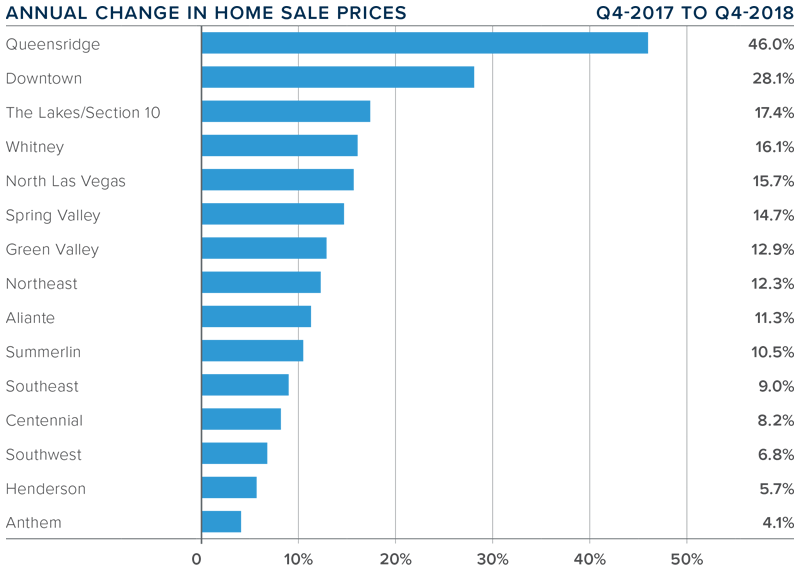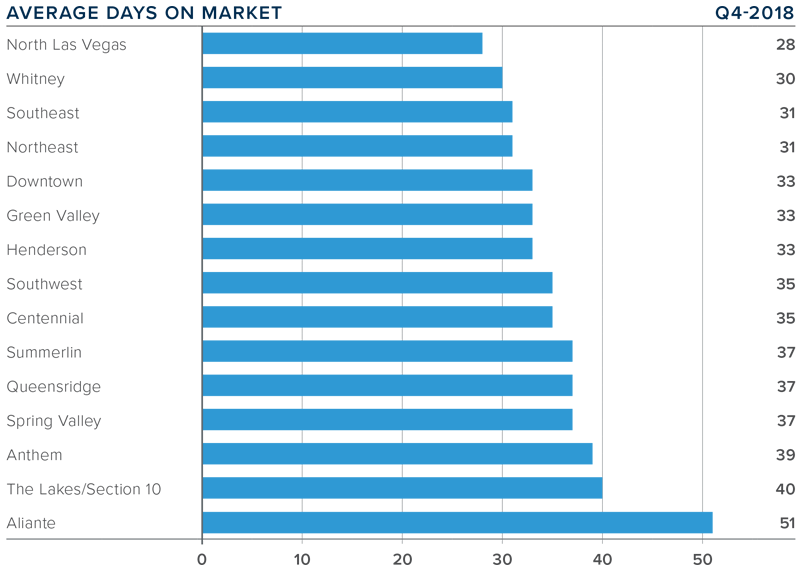The following analysis of the greater Las Vegas, Nevada real estate market is provided by Windermere Real Estate Chief Economist Matthew Gardner. We hope that this information may assist you with making better-informed real estate decisions. For further information about the housing market in your area, please don’t hesitate to contact your Windermere agent.
 ECONOMIC OVERVIEW
ECONOMIC OVERVIEW
Job growth in the Las Vegas metropolitan area remains very strong. A total of 38,900 new jobs were added over the past 12 months, representing an impressive annual growth rate of 3.9%. For perspective, the U.S. as a whole is growing at around 1.7% or less than half the rate of Las Vegas.
As jobs are added to the local economy, the unemployment rate is trending lower. The seasonally adjusted rate is 4.5%, down from 5.1% a year ago, but it is still higher than the national average. As I mentioned in last quarter’s Gardner Report, this is attributable to the rapidly rising labor force, which has grown by over 38,000 in the past year.
HOME SALES ACTIVITY
-
A total of 7,439 homes were sold in the fourth quarter of 2018 — a drop of 11.8% over the same period a year ago and 18.7% lower than the third quarter of 2018. The area had been suffering from a significant lack of inventory but that started to rise in mid-2018. Buyers have more choice and less urgency, so they are taking their time, which is leading to lower sales.
-
Year over year, pending sales dropped 10.5% and were down 22% compared to the third quarter. This suggests that closings in the first quarter of 2019 will not be very robust.
-
Sales rose very modestly in the Spring Valley area but dropped across the rest of the market areas covered by this report. The most substantial dip in sales was in the Aliante neighborhood, but this is a very small area and, therefore, prone to significant swings.
- The Las Vegas market is experiencing the same increase in listing activity as a majority of U.S. markets. I don’t believe this is a cause for concern, but more choice will lead to a temporary slowing in sales as buyers take their time when choosing a new home.

HOME PRICES
-
Home prices in the area rose to an average of $307,068, an increase of 10.5% compared to the fourth quarter of 2017, and were a modest 0.9% higher than in the third quarter of 2018.
-
Home prices continue to rise in the Las Vegas market, but I believe we will start to see a slowdown as affordability issues appear and listing activity increases this spring.
-
Prices in all sub-markets rose compared to the same quarter last year. The strongest growth was in the Queens Ridge sub-market, where prices were up a substantial 46%. Nine sub-markets saw double-digit price growth.
-
Home values are likely to continue to increase but more choice, in concert with affordability constraints, will lead to a slowdown in the rate of price growth.

DAYS ON MARKET
-
The average time it took to sell a home in the region dropped two days compared to the fourth quarter of 2017.
-
Region-wide it took an average of 35 days to sell a home in the fourth quarter of 2018.
-
Days on market fell in four of the sub-markets compared to a year ago, while two remained static and nine rose.
-
The greatest drop in days on market was in Aliante, which fell by four days compared to the same quarter in 2017. The greatest increase in market time was in Queens Ridge and Spring Valley, which rose by nine days.

CONCLUSIONS

The speedometer reflects the state of the region’s real estate market using housing inventory, price gains, home sales, interest rates, and larger economic factors.
Employment growth in Clark County continues to be very robust and we are likely to see tangible income growth, which can offset increasing home prices. Even though we are seeing signs that the housing market is trending toward balance, I believe Las Vegas will be one of the best performing areas in the Western United States for home price growth in 2019.

As Chief Economist for Windermere Real Estate, Matthew Gardner is responsible for analyzing and interpreting economic data and its impact on the real estate market on both a local and national level. Matthew has over 30 years of professional experience both in the U.S. and U.K.
In addition to his day-to-day responsibilities, Matthew sits on the Washington State Governor's Council of Economic Advisors; chairs the Board of Trustees at the Washington Center for Real Estate Research at the University of Washington; and is an Advisory Board Member at the Runstad Center for Real Estate Studies at the University of Washington where he also lectures in real estate economics.
 Facebook
Facebook
 X
X
 Pinterest
Pinterest
 Copy Link
Copy Link



